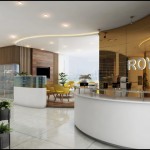Rhinoplasty is often described as an art form due to the precision required to achieve the desired results. The procedure involves carefully reshaping the nose to fit the patient’s unique facial structure, balancing both aesthetics and function. A successful rhinoplasty requires a deep understanding of facial anatomy, the subtle nuances of proportions, and the ability to create harmonious results that blend seamlessly with the rest of the face. Surgeons sculpt the nose with attention to every detail, ensuring that the changes made enhance the individual’s natural features.
Tailoring the Procedure to Each Patient
One of the most important aspects of rhinoplasty(تجميل الأنف ) is customizing the procedure to meet the specific needs and desires of the patient. Every nose is different, and the surgeon must take into account the person’s facial features, skin type, and overall aesthetic goals. Whether the patient wants to reduce the size of the nose, correct a bump, or refine the nasal tip, the procedure is personalized to achieve results that complement the rest of the face. Surgeons often use advanced imaging technology to help patients visualize their potential results before surgery, ensuring that their expectations align with what is surgically possible.
The Techniques Involved in Rhinoplasty
Rhinoplasty can be performed using a variety of techniques, depending on the desired outcome. In closed rhinoplasty, the incisions are made inside the nostrils, which helps to minimize visible scarring. In open rhinoplasty, a small incision is made across the columella, allowing the surgeon to have a clearer view and access to the nasal structures. The surgeon may reshape the cartilage and bone by removing, adding, or rearranging tissue. In some cases, cartilage grafts from other parts of the body may be used to enhance the shape of the nose. Regardless of the approach, precision is key to achieving natural-looking results that suit the patient’s facial anatomy.
The Role of Cartilage and Bone
A significant part of the rhinoplasty procedure involves working with the cartilage and bone of the nose. Cartilage provides the structure and flexibility needed to shape the nose, while bone helps to create a solid framework. Depending on the desired outcome, the surgeon may reduce or augment these structures to create a nose that is in harmony with the rest of the face. In some cases, cartilage grafts from the septum or ear may be used to provide additional support. These elements are sculpted with great care to ensure that the final result looks and feels natural, and that the function of the nose is not compromised.
Recovery and Healing: Patience is Key
The recovery process following rhinoplasty in Dubai(تجميل الأنف في دبي ) requires patience, as it can take several months for the final results to fully emerge. Immediately after surgery, patients typically experience swelling, bruising, and some discomfort. During this time, it is important to follow aftercare instructions closely, including resting and avoiding activities that could interfere with the healing process. The splint placed on the nose after surgery helps to support the new shape and prevent injury during the early stages of healing. Over the course of a few weeks, most of the swelling will subside, and the nose will begin to take on its new form. However, the full results may not be visible for several months, as subtle changes continue to occur as the nose heals.
Achieving the Perfect Nose
The goal of rhinoplasty is to create a nose that enhances the overall appearance of the face while maintaining balance and proportion. A skilled surgeon can sculpt a nose that not only addresses specific concerns, such as a dorsal hump or wide nostrils, but also improves the overall harmony of the facial features. By understanding the intricate details of facial anatomy and employing advanced surgical techniques, rhinoplasty can produce results that look completely natural, as if the nose has always been this way. When done correctly, rhinoplasty can have a transformative effect on a person's appearance, boosting confidence and enhancing their self-image.
Conclusion
Rhinoplasty is an intricate and highly specialized procedure that requires a blend of skill, knowledge, and artistry. By customizing each surgery to the individual patient’s needs and preferences, surgeons can sculpt a nose that enhances facial beauty and improves functionality. From shaping cartilage and bone to achieving a balanced and natural result, the process of rhinoplasty is a testament to the precision and artistry involved in cosmetic surgery. With careful planning, expert technique, and a focus on the patient’s unique features, rhinoplasty can truly transform a person’s appearance, creating a nose that is both beautiful and functional.






Comments